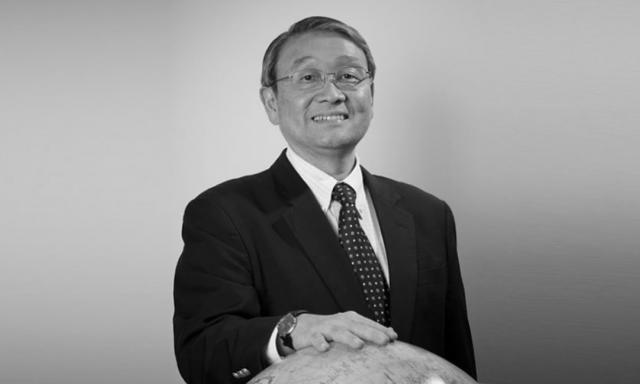

 Article
Article

 An ambicultural mindset applied to business, or to any enterprise, embraces the possibility for long-term relationships among multiple parties, from managers and policymakers to industries and customers, from organizations to societies and nations.
An ambicultural mindset applied to business, or to any enterprise, embraces the possibility for long-term relationships among multiple parties, from managers and policymakers to industries and customers, from organizations to societies and nations.

Insights from
Written by
The world today is intricately interconnected — and also more divided than ever. We need organizations willing to adopt and spread new ideas, perspectives and practices, and executives who grasp global complexity by thinking in integrative ways.
In my presidential address to the Academy of Management in 2013, I suggested that an “ambicultural mindset” can be applied to business management — or to any of life’s endeavors. The essence of the ambicultural idea is this: Every incidence or observation that challenges assumptions or runs counter to intuition or long-held beliefs holds the seeds for new understanding and dramatic learning.
One company that has sustained organizational ambiculturalism for more than a century is an American industrial firm that combines competitive and collaborative practices and balances interests among diverse stakeholders. Likewise, we can identify business leaders from both East and West who manifest ambicultural qualities.
Such organizations and executives bridge divisions and assimilate what appear to be opposites. How do they apply the ambicultural approach in the management process?
Qualities of ambicultural corporations and professionals include:
Further, ambicultural individuals possess skills that allow them to work in any institution, industry or region. They seek a balanced career and life, and aspire to reach the pinnacles of not only their profession, but humanity.
The ambicultural idea may be best understood in the context of Eastern thought tradition: the concepts of zhong, or “middle way” (a balanced, holistic philosophy that allows for the reconciliation of paradox in work and life), duality and relativity (no entity exists except in relation to another), and yin-yang (the complementarity of opposites).
Ambiculturalism is informed by various conceptions of culture in different contexts. Following Confucian tradition, I embrace a conception of “culture” as encompassing all human affairs. Cultures may be defined by geography (East and West), business (manufacturing and high-tech) and corporate function (finance and marketing), to name only a few.
In my teaching, the “gold standard” of an ambicultural organization is a firm that might seem to be an unlikely candidate: Lincoln Electric, a U.S.-based welding equipment manufacturer founded in the 1890s in Ohio. Throughout its history, Lincoln has balanced tradition and entrepreneurship, and individual interests and social welfare, through such practices as:
Interpretations of the Lincoln story reflect different cultural perspectives. From U.S. executives I’ve heard comments like “Lincoln Electric is the best form of capitalism” and “The company symbolizes Japanese management.” Teaching in China, I have been told by managers of state-owned enterprises (SOEs), “This is the best example of a socialist enterprise” and “Lincoln represents the ideal of an SOE today.”
MBA and executive students provide anecdotes of their application of the ambicultural idea. One recalled his experience as a member of an international peacekeeping task force in Croatia in the 1990s:
There is no greater example of ambiculturalism than when deployed as part of the armed forces in support of a United Nations mission. One thing that became quickly clear was that in order to be able to do my job and gain the trust of my comrades, I was going to have to fully understand their culture, which included their assumptions of me as a representative of the U.S. military. Were it not for the credibility and relationships I had built working with the representatives of the partner nations, I would not have been able to be successful in fulfilling our mission to the United Nations. I have taken this experience with me all these years.
A former MBA student, now working as a partner in an IBM-Toshiba venture, wrote in an email:
I returned from Tokyo yesterday, where I spent part of my time working internally and part of my time escorting a large U.S. client. In each setting, my job was to help both parties see and leverage the best from the other. My position as a mix of outsider and insider, while risky, also presents opportunity, and I am trying to embrace that as much as possible.
The world is poised for learning between any parties that may appear to be in opposition — for example, the U.S. and China, the world’s preeminent global economic powers. The ambicultural perspective combines the best of Western and Eastern, and competitive and cooperative, paradigms. An ambicultural mindset applied to business, or to any enterprise, embraces the possibility for long-term relationships among multiple parties, from managers and policymakers to industries and customers, from organizations to societies and nations. Transcending differences, combining the best of different cultures — the process of “becoming ambicultural” — offers a path toward balance and sustained progress in all our pursuits.
Chen is a leading authority in strategic management, a field that helps companies align corporate policies and resources with strategic priorities. He is recognized for his pioneering work in competitive dynamics — how firms compete and collaborate worldwide — and ambicultural management — how to integrate the best aspects of seemingly oppositional business cultures and practices, such as Eastern and Western, or competitive and cooperative.
Chen’s corporate clients include Merck, FedEx, Rolls-Royce and Tencent. His work has been featured frequently in global media, including Forbes, The Wall Street Journal and Financial Times, and he contributes a regular column to Harvard Business Review (Chinese). Chen’s article “Becoming Ambicultural: A Personal Quest and Aspiration for Organizations,” based on his 2013 Academy of Management president’s speech, appeared in Academy of Management Review in 2014.
B.S., National Taipei University; MBA, Ph.D., University of Maryland